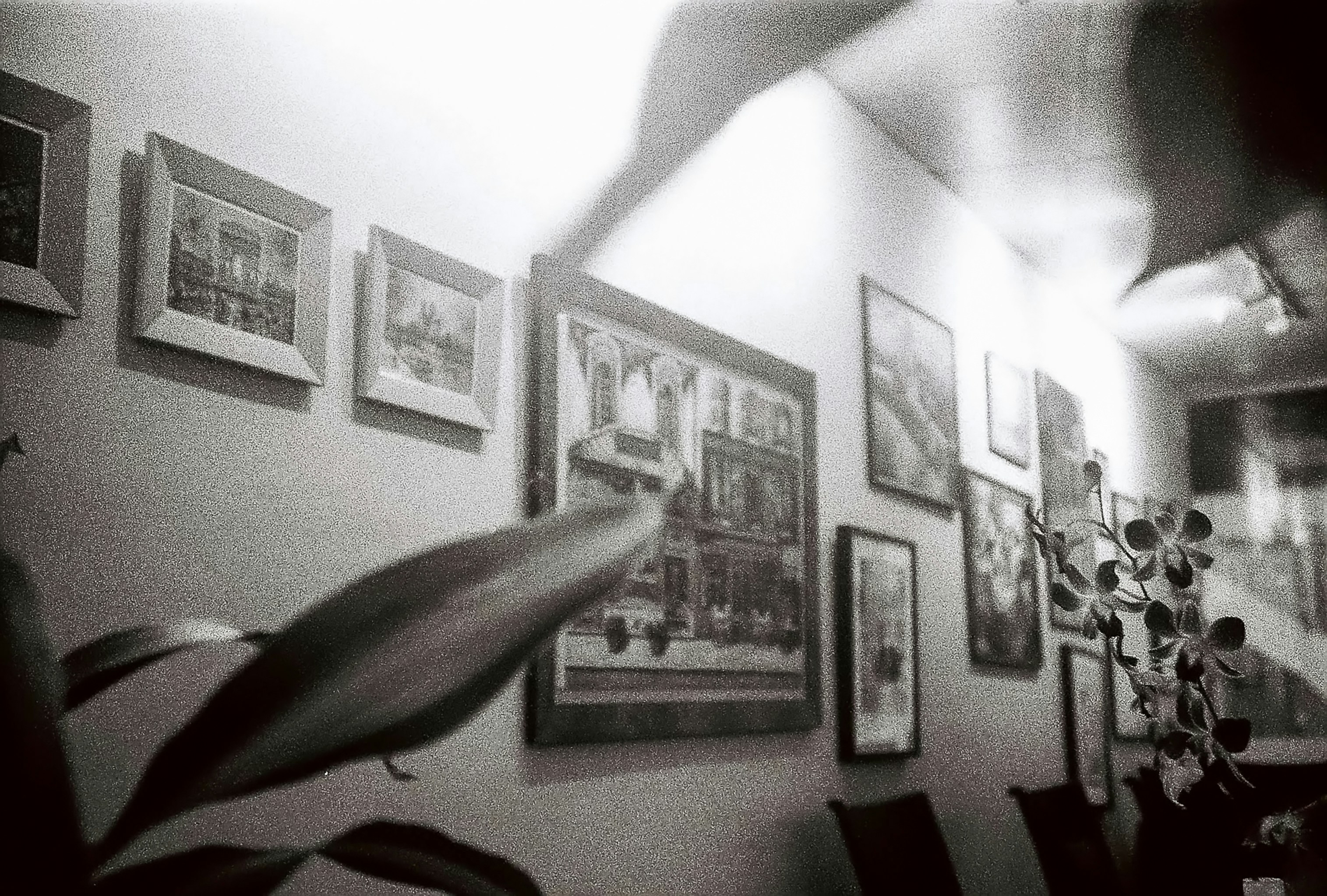Top 10 Modern Wall Art Trends to Elevate Your Space


Introduction to Modern Wall Art
Modern wall art has emerged as a vital component of contemporary interior design, profoundly influencing the ambiance and aesthetic of various spaces. Unlike traditional art forms, which often focus on classical techniques and subjects, modern wall art embraces innovative styles, diverse mediums, and a broader range of themes. This evolution in art is reflective of societal changes, technological advancements, and a desire for personal expression, making it more relevant today than ever before.
The significance of modern wall art lies not only in its visual appeal but also in its ability to convey individuality and creativity. Homeowners and designers alike are increasingly recognizing the impact that unique art pieces can have in transforming a mundane environment into an inspiring one. Whether it is a vibrant abstract painting, a minimalist print, or a three-dimensional sculpture, modern wall art acts as a focal point within a room, drawing attention and eliciting conversation.
In both residential and commercial settings, modern wall art plays a crucial role in establishing character and mood. Unlike the often prescribed and formal pieces associated with traditional art, contemporary art forms allow for a more personal connection. This connection encompasses a variety of themes, from social issues to personal experiences, encouraging viewers to engage with the artwork on a deeper level. The growing popularity of modern wall art highlights society’s shift towards valuing individuality and personal taste over conventional standards.
In summary, modern wall art is much more than decorative elements; it represents a cultural movement that prioritizes creativity, expression, and innovation in design. Its ability to enhance living and working spaces while reflecting individual tastes marks its significance in today’s interior design landscape.
Understanding Different Styles of Modern Wall Art
Modern wall art encompasses a variety of styles that each convey distinct emotions and aesthetics, making it essential to understand their characteristics for effective incorporation into any space. One popular style is abstract art, characterized by its use of colors, forms, and shapes to express ideas rather than represent reality. This form often evokes personal interpretations, allowing viewers to connect with the artwork on a unique level. It can range from vibrant compositions bursting with energy to more subdued pieces that promote tranquility.
Minimalism stands in stark contrast, emphasizing simplicity and functionality. Minimalist art often features a limited color palette and clean lines, focusing on the essential elements of design. Its uncluttered and straightforward approach makes it suitable for modern spaces seeking to create a serene atmosphere. This style harmonizes well with a variety of contemporary decor themes, including Scandinavian and industrial design.
Geometric art is another compelling style, characterized by the use of shapes and patterns. This form can appear both structured and dynamic, as it often plays with perception and spatial relationships. Geometric pieces can serve as striking focal points in rooms, effortlessly complementing minimalist or even eclectic decor setups.
Lastly, pop art breaks traditional boundaries with its vibrant colors and commercial imagery. This style seeks to challenge the norm and often incorporates elements from popular culture, making it particularly appealing for those who wish to inject a sense of fun and boldness into their interiors. Pop art can add character and a youthful touch to various themes, from retro to contemporary.
Incorporating these diverse styles of modern wall art not only enhances aesthetics but can also evoke the desired atmosphere in any space, aligning perfectly with the overall decor theme.
The Role of Color in Modern Wall Art
Color plays a pivotal role in modern wall art, influencing not only the aesthetic appeal of a space but also the emotions and moods it evokes. Understanding color theory is essential for both artists and enthusiasts alike, as it serves as the foundation for creating harmonious and impactful visual experiences. Each hue carries its unique psychological implications; for instance, warm colors like red and orange tend to incite energy and excitement, whereas cooler tones such as blue and green are associated with tranquility and calmness.
When selecting modern wall art, consider the psychological effects different colors may have on the inhabitants of your space. A study of color psychology suggests that colors can elicit specific feelings, making them a powerful tool for interior decoration. Using vibrant artwork in a home office may stimulate creativity and productivity, while softer, muted colors in a personal space might promote relaxation and peace. Therefore, understanding how various shades interact with light and space can significantly enhance the overall ambiance of an area.
Moreover, choosing artwork that aligns with your existing color schemes can create a cohesive look within your home or office. Consider using a color wheel to identify hues that complement one another. For example, selecting wall art that features analogous colors, which are located next to each other on the wheel, can result in a serene and unified aesthetic. Additionally, incorporating pieces with contrasting colors can add excitement and spice to the décor while drawing the viewer’s attention to particular details of the artwork.
In summary, the role of color in modern wall art is multifaceted, influencing the overall aesthetic and emotional tone of a space. By applying principles of color theory and being mindful of the emotions elicited by different shades, individuals can select artwork that not only beautifies their environment but also enriches their daily experiences.
Top 10 Modern Wall Art Creators and Designers
Exploring the realm of modern wall art unveils a variety of creators and designers who shape today’s artistic landscape. Their diverse backgrounds and distinctive styles contribute significantly to current trends in contemporary art. Below are ten influential figures in the modern wall art scene:
1. Yayoi Kusama – Known for her immersive installations and polka dot motifs, Kusama’s work often embraces themes of infinity and obsession. Her large-scale, vibrant pieces have garnered worldwide acclaim, exemplified in her well-known Infinity Mirror Rooms.
2. Banksy – This anonymous street artist has transformed urban landscapes into powerful political statements. Banksy’s satirical artworks challenge societal norms and have become iconic symbols of resistance and social commentary.
3. Damien Hirst – A prominent figure in the Young British Artists movement, Hirst is renowned for his controversial pieces that explore life and death. His striking works often incorporate the use of animals preserved in formaldehyde, providing a provocative look at mortality.
4. Sarah Morris – Morris combines abstraction with cityscapes, creating vibrant and dynamic wall art. Her geometric forms and rich colors reflect the urban environment, drawing from her experiences in metropolitan settings.
5. Kehinde Wiley – Wiley’s portraiture redefines traditional representations of race and identity. His artworks blend classical techniques with contemporary figures, offering a fresh perspective on the portrayal of African Americans in art.
6. Jenny Holzer – Using language as her medium, Holzer’s bold text-based art communicates powerful political messages. Her installations often feature LED displays and projected text, engaging audiences in dialogue about relevant societal issues.
7. El Anatsui – The Ghanaian artist creates stunning wall sculptures from recycled materials, transforming bottle caps into intricate tapestries. El Anatsui’s work emphasizes environmental sustainability while celebrating African culture.
8. KAWS – As a multidisciplinary artist, KAWS blends fine art with commercial appeal. His vibrant characters and pop culture references resonate across various demographics, making his wall art widely recognizable and accessible.
9. Tracey Emin – Emin’s autobiographical approach to art permits viewers to engage with her personal experiences. Through text, canvas, and neon sculptures, her work encapsulates raw emotions and intense narratives, resonating deeply with contemporary audiences.
10. Takashi Murakami – Celebrated for combining fine art with commercialism, Murakami’s “superflat” style incorporates traditional Japanese art forms. His colorful, cartoon-like characters have captivated global audiences, blending pop culture with artistic expression.
These artists and designers are at the forefront of modern wall art, each contributing uniquely to the evolving tapestry of contemporary artistic expression. For more about their work, consider exploring their respective portfolios to appreciate the richness of their creations.
How to Choose the Perfect Wall Art for Your Space
Selecting the ideal wall art for your home or office environment can significantly enhance the aesthetic appeal of your space. The process begins by assessing the scale of the artwork in relation to the size of the wall it will adorn. A large piece can serve as a striking focal point in a spacious living room, while smaller artworks may work better in confined areas or as part of a gallery wall arrangement.
Placement is another crucial consideration. Positioning artwork at eye level generally creates a more engaging experience for viewers. However, experimental approaches to placement can yield unique visual interest, particularly in spaces like galleries or creative workspaces where innovation is encouraged. Take into account the surrounding furniture and architecture, ensuring that the art complements rather than clashes with existing elements in the room.
Harmonizing your wall art with the overall decor style is essential. Whether your space embodies modern minimalism, rustic charm, or eclectic whimsy, the artwork should reflect your personal taste and lifestyle while resonating with the room’s atmosphere. One effective way to achieve this harmony is by employing a consistent color palette across all art pieces, which can unify varying styles and mediums.
When creating a gallery wall, consider a mix of frames, sizes, and finishes to establish a dynamic visual narrative. Start by arranging the artworks on the floor to experiment with different combinations before finalizing their positions on the wall. Additionally, don’t hesitate to incorporate non-art elements, such as mirrors, plants, or shelving, to provide depth and variety to the display.
Ultimately, selecting the perfect wall art for your space should be a reflection of your individual style and a thoughtful contribution to the environment you wish to cultivate.
Innovative Techniques and Materials in Modern Wall Art
The landscape of modern wall art is continuously evolving, driven by innovative techniques and materials that challenge traditional boundaries. One particularly prominent trend is the use of mixed media, which encompasses a variety of materials and artistic methods. Artists are increasingly blending paint, photography, textiles, and even found objects to create unique pieces that engage multiple senses. This multidisciplinary approach allows for greater expression and creativity, enabling artists to convey more complex narratives within their work.
Digital art has also surged in popularity, propelled by advancements in technology that provide artists with new tools and platforms for creation. Digital illustrations can be easily manipulated and reproduced, leading to a wide array of styles and possibilities. Moreover, the rise of social media has allowed artists to showcase their work to a global audience, fostering a dynamic community that influences contemporary trends. From captivating digital prints to immersive augmented reality experiences, digital art is redefining how viewers engage with artwork.
Another noteworthy development is the focus on eco-friendly materials in modern wall art. As sustainability becomes increasingly important, artists are turning to recycled materials and sustainable production methods. This not only helps to reduce waste but also sets a new precedent for ethical responsibility in art creation. By using everything from reclaimed wood and repurposed metal to organic paints and inks, artists can create visually striking pieces that resonate with environmentally conscious consumers.
Technological innovations have also transformed the way art is displayed. Virtual galleries and online exhibitions allow art lovers to experience modern wall art from the comfort of their homes. In addition, smart technology is enabling interactive installations that respond to viewers’ movements or preferences, creating a more engaging encounter with art. As we embrace these innovative techniques and materials, the future of modern wall art looks increasingly exciting and diverse.
The Benefits of Investing in Modern Wall Art
Investing in modern wall art offers numerous advantages that can significantly enhance any living or working space. One of the primary benefits is the enhancement of aesthetic appeal. Modern art pieces often serve as focal points, sparking conversations and conveying the personality of the space. By incorporating contemporary art into your interiors, you can create a more dynamic and visually stimulating environment that reflects your personal taste and style.
Another compelling reason to invest in modern wall art is its potential to increase property value. Art has been recognized as a valuable asset class, often appreciating over time. Homebuyers frequently seek properties that feature unique and high-quality art, as these elements can create an overall impression of sophistication and cultural awareness. Therefore, carefully curating a collection of modern art can serve not only as a means to beautify a space but also as a savvy financial strategy.
In addition to aesthetic and financial advantages, investing in modern wall art can provide personal satisfaction. Art has the power to evoke emotions and inspire reflection, offering a tangible connection to one’s life experiences and aspirations. A thoughtfully chosen piece may represent significant milestones or embody social consciousness, allowing the owner to express their values and beliefs visually. Such investments become an integral part of one’s identity and growth, enhancing the overall experience of living within that environment.
Ultimately, whether you are drawn to contemporary art for its beauty, investment potential, or its ability to express personal narratives, modern wall art can transform a mundane space into something remarkable. By thoughtfully selecting pieces that resonate with you, you will not only promote a pleasing aesthetic but also elevate your overall living experience.
Caring for Your Modern Wall Art
Maintaining modern wall art is crucial to preserving its aesthetic appeal and ensuring its longevity. One of the first steps in caring for your artwork is to establish proper cleaning methods. Dust can accumulate on the surface of your art pieces, which may lead to deterioration over time. It is advisable to use a soft, dry microfiber cloth to gently wipe away dust. Avoid using any harsh cleaning agents or abrasive materials that might scratch the surface and damage the artwork. For pieces with intricate textures or three-dimensional elements, a soft-bristled brush can help dislodge dust without causing harm.
Climate considerations are also essential in the care of modern wall art. Artwork can be sensitive to temperature and humidity fluctuations. Ideally, your art should be displayed in an environment where temperatures remain stable, typically between 60°F and 75°F (15°C to 24°C) with humidity levels around 40% to 50%. High humidity can promote mold growth, while extremely dry conditions can lead to cracking or warping, particularly in works on paper or canvas. Monitoring the room’s climate with a hygrometer can provide insights that help maintain these optimal conditions.
Another critical factor to consider is the placement of your wall art. Sunlight can cause fading and discoloration over time, significantly impacting the visual integrity of your pieces. To prevent damage from UV rays, consider positioning your artwork away from direct sunlight. Additionally, using UV-filtering glass or acrylic when framing may further protect the art from light exposure. Environmental factors, such as smoke and pollutants, can also tarnish the appearance of modern wall art, so maintaining clean air quality within your space is beneficial.
By following these care tips and being mindful of the conditions in which your modern wall art is displayed, you can maximize its beauty and preserve its condition for years to come.
Conclusion: Embrace Modern Wall Art in Your Life
In contemporary interior design, wall art serves not only as a decorative element but as a vital component that reflects personal taste and enhances the ambiance of a space. The exploration of modern wall art trends, such as abstract expressions, mixed media installations, and eco-conscious pieces, highlights the versatility and creativity that such art brings to both residential and professional settings. These trends have transformed how we perceive and utilize art within our environments, emphasizing the importance of selecting pieces that resonate with individual emotions and ideologies.
Additionally, the rise of technology in art creation—through digital prints and augmented reality experiences—has expanded the possibilities of integrating art into our lives, making it more accessible for a diverse audience. As urban living spaces increasingly emphasize minimalism and functionality, wall art has become a crucial element in adding character and depth to otherwise plain walls. The ability to curate a personal gallery in one’s home or office can significantly affect mood, inspiration, and connectivity with one’s surrounding environment.
By embracing modern wall art, you allow for a richer, more expressive atmosphere that goes beyond mere aesthetics. It’s an opportunity to showcase your personality, values, and perspectives. As we’ve discussed, the various trends available today can help you find the perfect fit for your unique style, whether you prefer bold colors to invigorate a room or subtle monochromes that create tranquility.
Therefore, it is highly encouraged to explore these modern wall art options—visit galleries, seek online platforms, or support local artists—and curate pieces that speak to you. Elevate your space and enrich your life through art, making it not just an addition, but a fundamental part of your home or workplace design.







